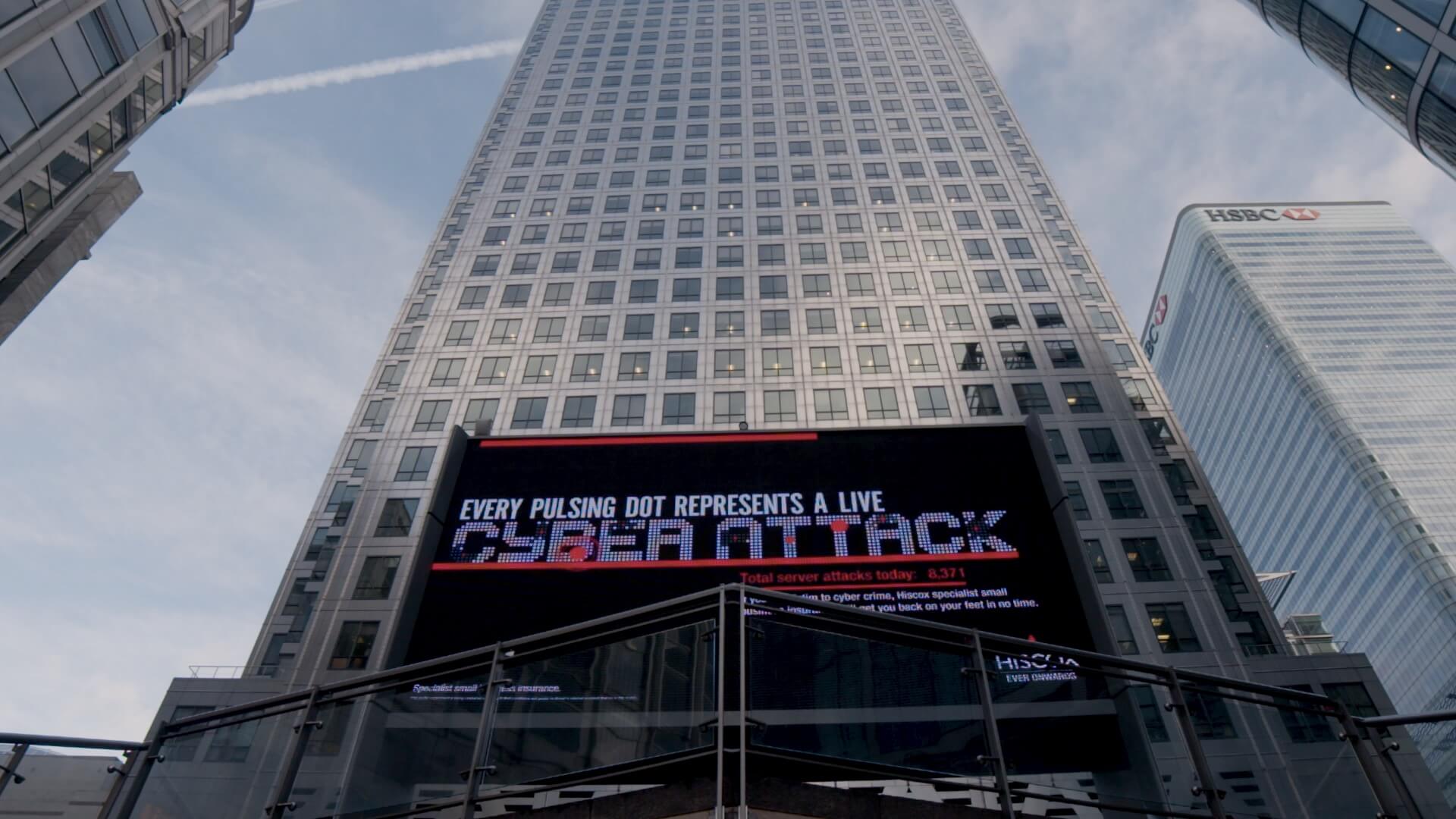Digital billboards in the UK will today start showing hacking attempts
The campaign, sponsored by an insurance company, intends to demonstrate how often hacking attempts are made on a typical small business site.

A digital billboard in London’s Canary Wharf
A variety of recent campaigns have employed digital billboards to show imagery in response to data from weather, traffic conditions, social posts from passersby and commute times.
Today, a new week-long campaign launches in the UK: Dozens of digital displays will demonstrate the frequency of hacking attempts on a typical small business’s website.
Called the Honeypot Poster by campaign sponsor Hiscox insurance, the displays show dots that demonstrate live hacking attempts on custom, “honeypot” proxy servers of the sort that might host a typical small business website, except there is no virus or firewall protection. The servers hold some data but no personal or sensitive info.
The displays show changing dots inside the words “Cyber Attack,” with each dot representing a hacking attempt and a numerical counter showing the daily attacks thus far. During the trial period for the campaign, the hacking attempts averaged 23,000 daily, sometimes peaking as high as 60,000, from Russia, Vietnam, the UK and elsewhere around the world.
The point, Hiscox Head of Marketing and Partnerships Olivia Hendrick said in a statement, is to make “small businesses more aware of the very real threat that cybercrime poses and challenging the belief that cyber criminals only target larger organisations.”
She added that her company was “genuinely astounded by the number of attacks.”
The campaign was created by the AMV BBDO agency, with production by Grand Visual and data analysis and delivery via ad tech firm QDOT’s OpenLoop platform. QDOT is a spinoff of Grand Visual, and the platform has been utilized for previous Grand Visual out-of-home campaigns.
Grand Visual CTO Dan Dawson told me via email that the agency team had seen the Norse Attack Map, which shows cyber-attacks taking place globally, but decided that wouldn’t convey the threat to small companies.
The campaign utilizes over a hundred digital out-of-home screens, including 35 large-format digital billboards and other digital displays at such locations as railroad stops or businesses.
Contributing authors are invited to create content for MarTech and are chosen for their expertise and contribution to the martech community. Our contributors work under the oversight of the editorial staff and contributions are checked for quality and relevance to our readers. MarTech is owned by Semrush. Contributor was not asked to make any direct or indirect mentions of Semrush. The opinions they express are their own.
Related stories
New on MarTech